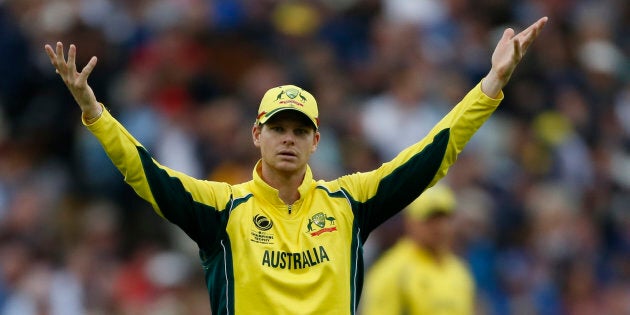
At the beginning of this month, Australia's elite cricketers stopped being paid and the cricket pay dispute entered a new phase. Two weeks on, it is clear that the two warring sides -- Cricket Australia and the Australian Cricketers' Association -- are as far apart as they have ever been.
On Thursday 13 July, CA chairman David Peever commented in 'The Australian', accusing the ACA of being "reckless" and stating that CA had made "what in any normal circumstances would be regarded as a very generous offer".
The following day, former politician and current adviser to the ACA Greg Combet returned serve, claiming that "without the trust and commitment of the players in a partnership that benefits the game, Cricket Australia has no game at all".
A propaganda war is now being waged, aimed at winning the hearts and minds of the cricket-loving public. It was perhaps assumed that the broadcasters and sponsors would exert enough financial pressure on both parties to solve this pay dilemma. They haven't succeeded.
Without the players there is no game. From what has been made public in recent days, the ACA's arguments are far superior to those of Cricket Australia.
The genesis of the pay dispute
Under the captaincy of Mark 'Tubby' Taylor, two decades ago a revenue-sharing model was agreed upon where income generated would be carved up. Cricket Australia would pocket 75 percent of the income generated and the players would take 25 percent.
Less than a year ago CA proposed a new model based on fixed amounts of payment. The new deal also coincided with billion dollar increases in revenue.
The main reason propagated by CA was to lift grassroots participation, which it claimed was neglected and 'chronically underfunded'. In fact, the line has been held consistently and CA have draped their concerns with pieties about grassroots cricket.
There is no doubt that the pay dispute is simply about 'greed' and not related to the promotion of grassroots level sport. There are two main justifications for this.
First, in the commercialised Australian cricket landscape the players are now commodities. While cricketers play the sport for a multitude of reasons, maximizing financial remuneration is part and parcel. It is the players who generate the income through broadcast and sponsorship deals. While I presume all of them have an interest in the sustainability of the sport, it is not in their job description to address grassroots participation.
The players would argue that they promote the sport at the grassroots level by being role models, both sporting and social. They are there to inspire kids (both boys and girls) to take up the sport and to promote the virtues of cricket including the social and educational. Their success at the international level in tournaments such as The Ashes or the Women's World Cup, and the publicity generated, promotes participation.
Second, CA has a very mediocre track-record on promotion of grassroots level cricket. Since the revenue sharing model was adopted, cricket at the grassroots level participation has declined.
The real focus of CA has been to commercialize the sport as much as possible and generate new income streams especially in relation to TV rights. Announcements of grassroots programs have been limited and this has been reflected in the decline of player numbers.
In many school systems cricket has been phased out of school sport. In the recently released Health and Physical Education curriculum it is not included as a mandated sport. Cricket Australia have not been proactive in promoting the sport. Cricket's commercialisation has been the main focus.
It is not clear how the Australian structure must be changed to better fund grassroots cricket. In fact, the financial details of CA have not been fully transparent. It is not clear what the individual senior executives and paid directors receive. The ACA is asking to see how the revenue is carved up. This is not explicit in CA's annual reporting. Show the figures so we know what is going on.
The End Game
It is 40 years since the establishment of World Series Cricket ushered in the commercialisation of the Australian sporting landscape.
Both sides of this current dispute are showing solidarity and no visible signs of backing down. The Australian skipper Steve Smith tweeted:
And last week the Australia A players abandoned their tour of South Africa.
Around the corner there are commitments against Bangladesh, India and an Ashes series. The cricket pay dispute in not a mining dispute. Peever's experience running Rio Tinto will not help him. Without the players there is no game. From what has been made public in recent days, the ACA's arguments are far superior to those of Cricket Australia.
ALSO ON HUFFPOST AUSTRALIA